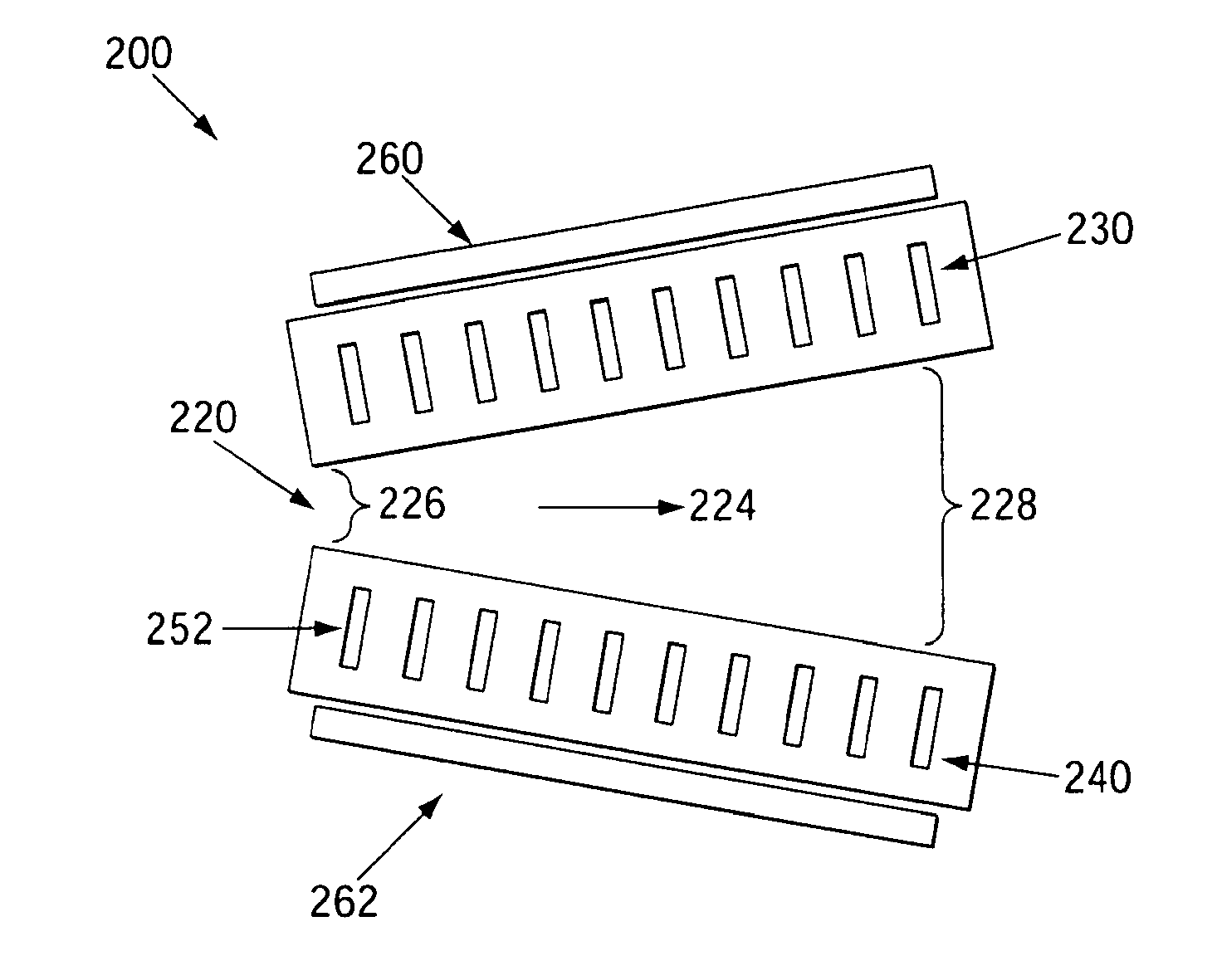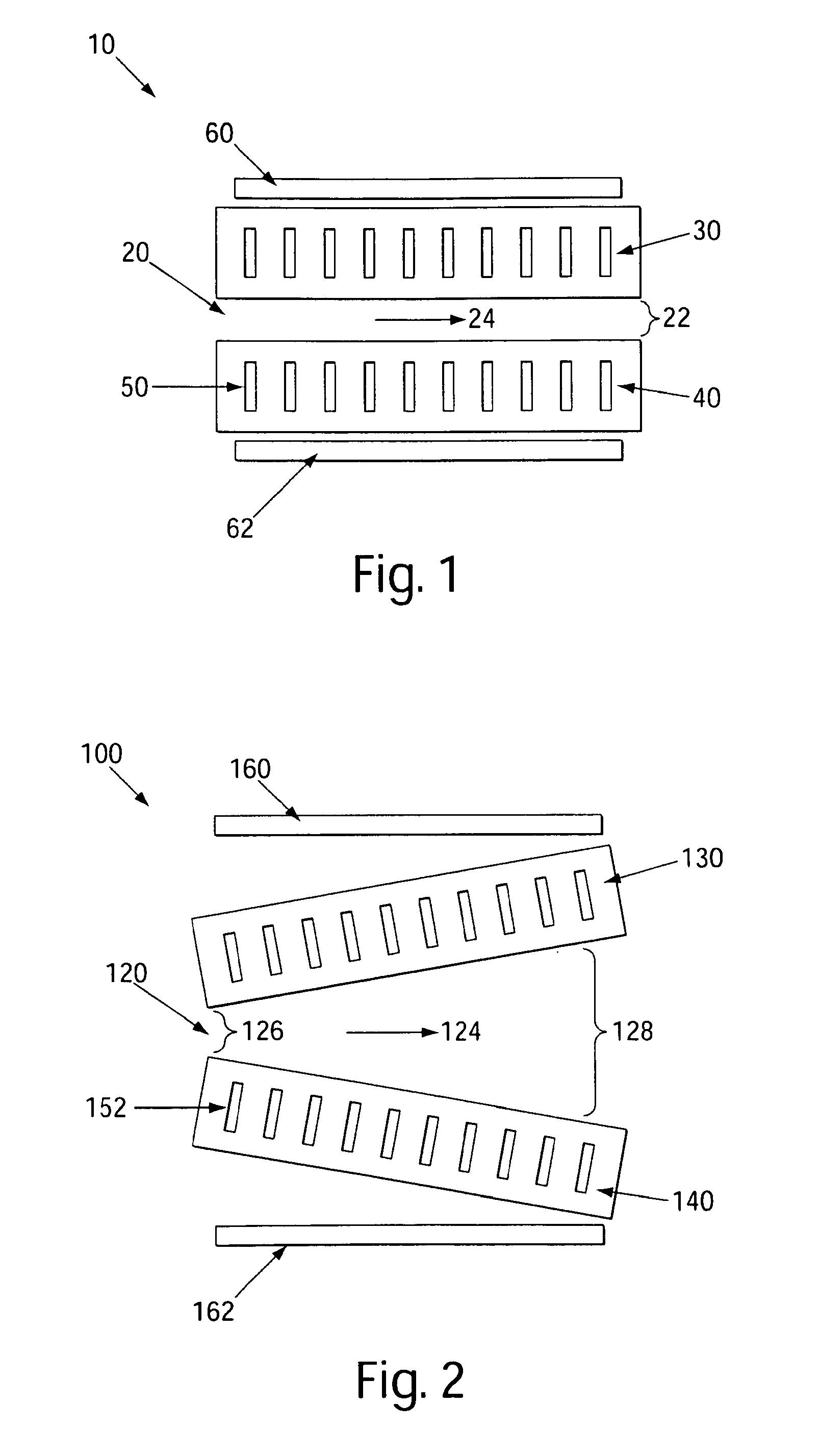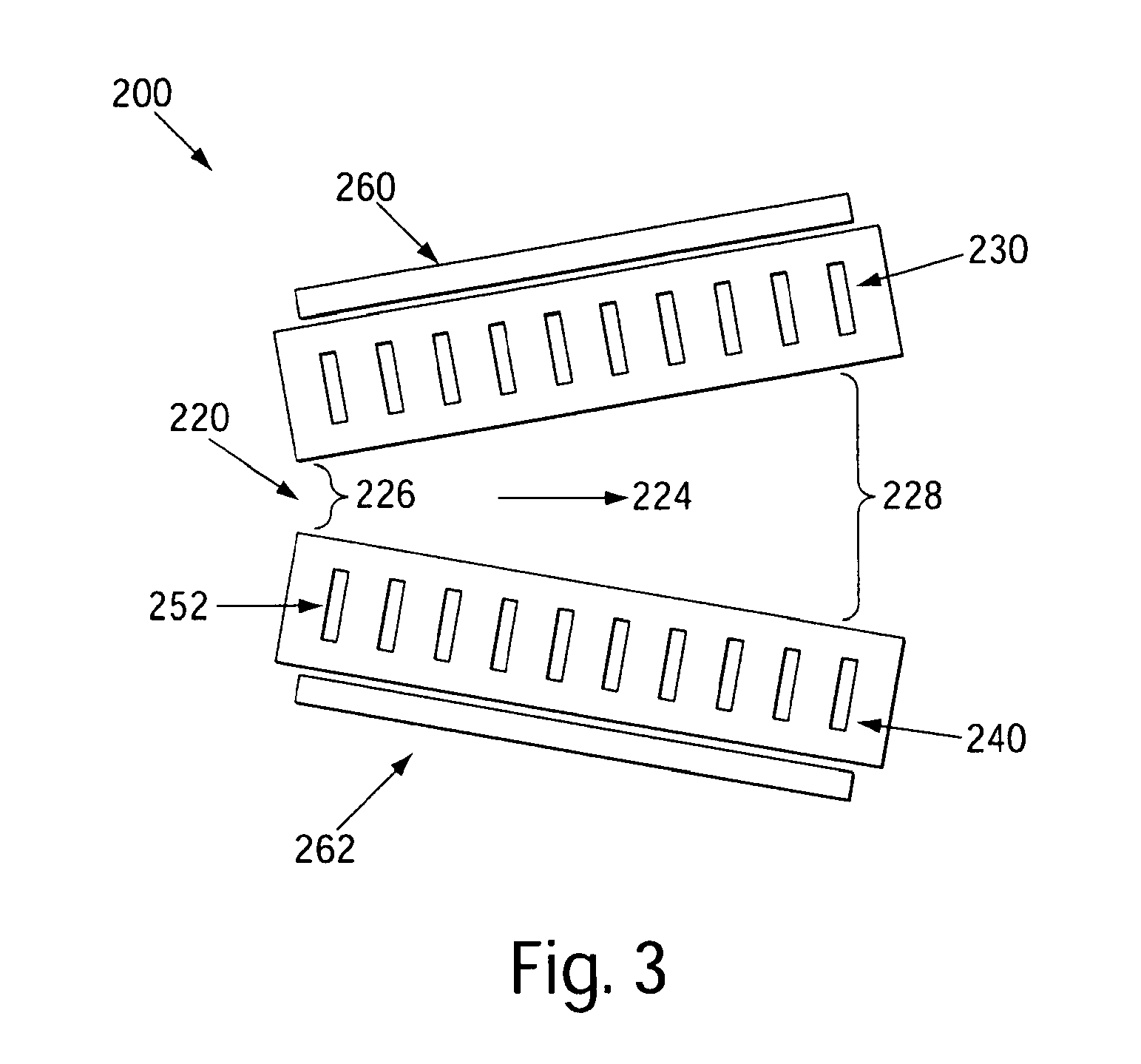Isoelectric focusing systems and methods
a technology of isoelectric focusing and focusing system, which is applied in the direction of fluid pressure measurement, liquid/fluent solid measurement, peptide measurement, etc., can solve the problems of reducing the effectiveness of the electric field in establishing the ph gradient, and the resolution is lower than the preparation system, so as to improve the separation from each other, enhance the overall performance of the device, and reduce or prevent the introduction of bubbles
- Summary
- Abstract
- Description
- Claims
- Application Information
AI Technical Summary
Benefits of technology
Problems solved by technology
Method used
Image
Examples
example 1
[0060]The following example describes the theoretical Basis for IEF, according to an illustrative embodiment of the invention. Mass transport equations were used as the starting point to formulate expressions to describe isoelectric focusing. The conservation equation for species in solution experiencing an electrophoretic force is given by Equation (1), below:
[0061]∂Ci∂t=∇_·(Di∇_·Ci-E_ziωiCi)(1)
[0062]In Equation (1) the concentration of a species C, is a function of position and time, electric field E, variable charge zi, constant mobility μi and its diffusion constant Di. In order to understand the effect of geometry and physical parameters on focusing, it may be helpful to non-dimensionalize the conservation equation for one-dimensional transient focusing and make two assumptions: i) a linear pH gradient is established over the total width, w, and ii) the species has a linear charge behavior in the channel (dzi / dx=Δzi / L=constant). Non-dimensionalizing and expanding the deri...
example 2
[0072]The model described in Example 1 was used to simulate the focusing of a protein, BSA, in a channel either 1 or 3 mm long. FIG. 8 shows the simulated focusing of BSA under three different geometry configurations at identical field strengths: (a) 1 mm, (b) 3 mm, and (c) 1 mm followed by focusing at 3 mm. To better quantify focusing, the simulation used low electric fields (5 V / cm for each case) for slow, low resolution focusing. The resolution (from a Gaussian fit, R2>0.999) of the focusing was 1.6 times greater for the longer channel. Transitioning from a shorter to a longer channel reached this higher-resolution steady state in 40% less time than the 3 mm case. These results show that the simulation results for small amphoteric molecules may also be applicable to large proteins with complicated electrophoretic behavior.
example 3
[0073]Free flow IEF devices were designed to have a sample channel defined by a porous material capable of allowing ion conduction between the sample channel and the electrode buffer, while preventing fluid convection between the two regions. In this study, a single stage straight channel design 20 mm long by 1 mm wide was compared with a similar straight channel design that was a 30 mm long by 3 mm wide straight channel and a tandem design, as shown in FIG. 9A. The tandem design consisted of four focusing regions: the first IEF stage is a single channel (1 mm wide by 7.62 mm long) that branches into three secondary IEF stages with dimensions identical to the first stage. A split configuration may provide i) a more uniform fluidic resistance for an improved flow field and sample collection, as well as a higher degree of control over the electric field within the device. The designs were based on a PDMS channel bordered by posts to define placement of the porous material without the ...
PUM
| Property | Measurement | Unit |
|---|---|---|
| particle size | aaaaa | aaaaa |
| length | aaaaa | aaaaa |
| length | aaaaa | aaaaa |
Abstract
Description
Claims
Application Information
 Login to View More
Login to View More - R&D
- Intellectual Property
- Life Sciences
- Materials
- Tech Scout
- Unparalleled Data Quality
- Higher Quality Content
- 60% Fewer Hallucinations
Browse by: Latest US Patents, China's latest patents, Technical Efficacy Thesaurus, Application Domain, Technology Topic, Popular Technical Reports.
© 2025 PatSnap. All rights reserved.Legal|Privacy policy|Modern Slavery Act Transparency Statement|Sitemap|About US| Contact US: help@patsnap.com



